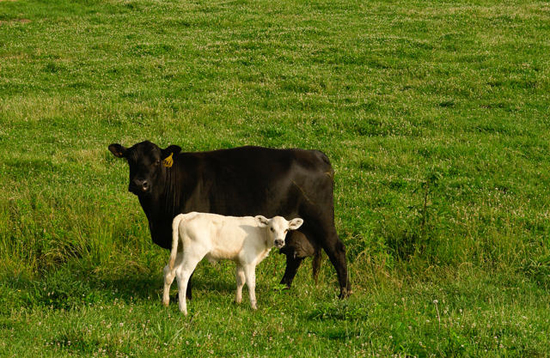Who let the bulls out?
Who let the bulls out?


With spring calves hitting the ground around the state, Kentucky cattle producers should begin to plan now for the breeding season to follow. Most young, healthy cows come back into heat within a few weeks after calving.
“There is more to a successful breeding season than just turning the bulls out,” said Roy Burris, University of Kentucky College of Agriculture beef specialist stationed at the Research and Education Center in Princeton. “Because of high feed prices, producers cannot afford to “carry” open cows in our herds, and historically high feeder-calf prices make it critical that we wean a calf from almost every cow that we own. We need to manage our cows and bulls so that high pregnancy rates can be achieved. Right now is the most important month in a spring-calving cow’s productive year.”
Burris said it’s critical to have calves born early in the calving season so they are re-bred before hot weather and because older calves are heavier. To do that, he emphasized that cows and bulls must be in tip-top shape at the start of the breeding season and not need to regain body condition.
“Don’t let cows lose body condition after calving,” he said. “Start supplemental energy and protein feeding after this year’s calves are born and continue feeding until pastures are adequate to maintain them while they are in peak lactation.”
Since cows can’t consume enough dry matter from watery, immature forages to maintain good body condition, producers should keep feeding them until the grass is adequate and feed a high magnesium mineral.
About a month before planning to turn out bulls or beginning artificial insemination, producers should make sure cows are on a non-endophyte infected pasture, if possible.
“If not, then you have to start the breeding season with cows in good body condition so that conception will occur early in the breeding season before heat stress occurs,” Burris said. “Don’t forget that clover can also dilute out the effects of the fescue endophyte.”
It’s also a good time for producers to have a veterinarian complete a breeding soundness evaluation on all bulls they plan to use and, perhaps, a spare.
“This is no time to come up short on bull power,” Burris added. “Last year’s soundness evaluations on your bulls don’t count either. Recent evaluations are your best form of insurance. And don’t forget to do your pre-breeding vaccination at least three weeks prior to the start of breeding – AI or natural. It is tempting to try to do everything in one trip through the chute but don’t do it especially with AI.”
Watch bulls closely during the breeding or “clean-up” period. Be sure that they remain sound, and are servicing and “settling” the cows. Record observed breeding dates and watch those cows for return to estrus. If this occurs, remove the bull and replace him. Producers with more than one breeding group might consider rotating the bulls at least once during the breeding season.
“While I’m on the subject of getting cows bred back, there is one thing that I find troubling about our long-range breeding plans – or lack of a plan,” Burris said. “That is the bulls that we use in herds that will be generating replacement females have too much “genetics” for milk and growth. If milking ability is not a problem in your cow herd, then you don’t need to use bulls with very high milk EPD. You shouldn’t select bulls that won’t generate good replacement females unless you are truly using a terminal cross – where all calves are destined for the feedlot.”
Burris said a good cow is one that will raise a good calf every year on the farm – usually with fescue pastures. Producers need a live calf from every cow, and they need the cows to breed back quickly, which is why this time of year is critical in beef cow-calf management.
Extension


